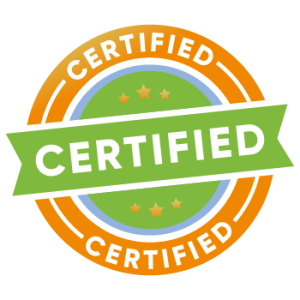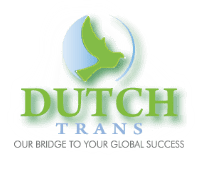
The Complete Guide to Certified Translation German to English
20 Jul The Complete Guide to Certified Translation German to English
Are you in need of a certified translation German to English? If so, you’ve come to the right place. In this complete guide, we will walk you through everything you need to know about certified translations from German to English, including when you might need one, how to find a qualified translator, the process of getting your documents translated, costs and timing, common challenges, and how to ensure your certified translation is accepted. Let’s dive in!
Understanding Certified Translation
A certified translation bridges the gap between two languages, ensuring that documents are officially recognized across linguistic barriers. This specialized service is performed by a professional translator who has received certification from a recognized authority or organization, affirming their expertise and trustworthiness in translating official documents. The hallmark of certified translation is not just the linguistic skill of translating words but the guarantee of accuracy and fidelity to the original document’s intent and meaning. Such translations are pivotal for the authenticity of critical documents like birth and marriage certificates, academic transcripts, and legal contracts, which may otherwise be subject to scrutiny or rejection if not properly certified. The translator’s certification serves as a formal declaration of the translation’s accuracy, often accompanied by the translator’s signature and contact details, which may be required for verification purposes by the requesting entity. This layer of validation is crucial for documents used in legal proceedings, immigration, education, and other formal settings where precision and reliability are paramount. Engaging with a certified translation service ensures that your documents are not only translated accurately but are also accepted as legitimate and official by institutions and organizations worldwide, facilitating seamless cross-cultural interactions and transactions.

When Do You Need a Certified Translation?
Navigating the necessity for a certified translation from German to English is critical for a variety of pivotal life events and official procedures. Such translations become indispensable when you are venturing into activities that require formal validation of your German documents in English-speaking environments. This typically includes but is not limited to, immigration applications, where you need to furnish documents like birth certificates, marriage certificates, and police clearance records in English. Similarly, for educational pursuits abroad, universities often require certified translations of academic records, diplomas, and recommendation letters to assess your eligibility and academic proficiency accurately. Legal proceedings also demand certified translations for any German legal document presented in court to ensure the document’s integrity and meaning are preserved. Furthermore, professional licensure, job applications, and even certain financial transactions may require certified translations of your qualifications, employment history, and financial statements to comply with local regulations and standards. Understanding the specific needs of the entity requesting the certified translation is crucial to ensure compliance and acceptance of your documents, making it imperative to verify these requirements well in advance of your submission deadline. More read about certified translation for US immigration.
Finding a Qualified Translator for German to English Translations
Embarking on the search for a translator capable of certified German to English translations requires diligent consideration to ensure the integrity and acceptance of your translated documents. The first step is to identify professionals who not only demonstrate fluency in both languages but have also been recognized by authoritative bodies within the translation industry. Certification from reputable institutions such as the American Translators Association (ATA) in the United States or the Institute of Translation & Interpreting (ITI) in the UK serves as a testament to a translator’s competence and professionalism in handling official documents. Additionally, it’s beneficial to seek out translators who specialize in the field relevant to your documents, whether it be legal, medical, educational, or technical, as this ensures familiarity with specific terminologies and conventions.
Engaging in direct communication with potential translators or services can further inform your decision. Inquire about their experience with documents similar to yours, their process for ensuring accuracy, and their policy on confidentiality to safeguard your sensitive information. Requesting samples of their work or references from previous clients can provide additional reassurance of their suitability for your needs. Opting for a translator who is transparent about their qualifications and willing to address your concerns will significantly contribute to a seamless and successful certified translation experience.
The Process of Getting Your Documents Translated
Embarking on the journey to have your documents translated and certified from German to English involves several critical steps. Initially, you must provide the original documents or clear, legible copies to the translator or german translation service you’ve selected. This is crucial for ensuring that the translator can accurately capture the essence and detail of the original document. Once the documents are received, the translator will begin the process of translating the content, paying close attention to maintaining the original’s meaning, context, and technical terminologies.
As part of the certification process, the translator will draft a statement or affidavit, asserting that the translation is an accurate and true representation of the original document. This certification is typically attached to the translated document along with the translator’s signature. The certification might also include the translator’s credentials and contact information, making it possible for authorities or institutions to verify the authenticity of the translation if necessary.
After the translation and certification process is complete, the translated documents, along with the certifications, are prepared for delivery. Depending on the service provider, these documents can be delivered in a digital format or as hard copies. It’s essential to communicate with the translator or service about your preference and any deadlines you may need to meet. This proactive communication ensures that the translation process aligns with your requirements and timelines, facilitating a smooth path to obtaining your certified translation.
Cost and Timing for Certified Translations
Navigating the financial and temporal aspects of obtaining a certified translation from German to English is crucial for effective planning. Generally, translators or translation agencies determine their fees based on the document’s length, complexity, and the urgency with which the translation is needed. A simple, one-page document like a birth certificate might cost less and be completed quicker than a multi-page, technical document that requires specialized knowledge. Rates can vary widely; thus, it’s advisable to compare quotes from several providers to find the best fit for your needs and budget.
The turnaround time for a certified translation can range from 24 hours for urgent requests to several weeks for extensive documents or less pressing timelines. Express services are often available but come at a premium. It’s beneficial to discuss your deadlines with the translator upfront to ensure they can meet your schedule. Keep in mind that thorough, accurate translations, especially of complex documents, require time. Planning ahead and allowing ample time for the translation and any potential revisions can mitigate the stress of tight deadlines and help ensure the final document meets your expectations and requirements.
Common Challenges and How to Overcome Them
Securing a flawless certified translation from German to English presents its own set of obstacles, with the risk of inaccuracies leading the pack. Inaccuracies in translation can stem from misunderstanding the original document’s nuances or improperly translating specific terminologies. To navigate these hurdles, selecting a translator with a solid background in both languages and the relevant subject matter is crucial. Ensuring the translator’s familiarity with the specialized vocabulary pertinent to your documents is vital, be it legal jargon, medical terms, or academic language. Another prevalent issue is meeting the stringent requirements set forth by various institutions, which may include specific formatting or the inclusion of particular details in the certified document. To address this, clear and open communication with the receiving entity about their prerequisites can help preempt any compliance issues. Engage with your translator to share these requirements in detail and work collaboratively towards meeting them. Additionally, allowing sufficient time for the translation process can mitigate the pressure of deadlines and provide a buffer for any needed revisions, ensuring the end product is both accurate and compliant with all stipulated requirements

Ensuring Your Certified Translation is Accepted
To guarantee the acceptance of your certified German to English translation, closely adhere to the guidelines and additional documentation requirements outlined by the requesting entity. This may include submitting the translator’s credentials or a detailed affidavit of accuracy alongside your translated documents. Verification of the translation’s accuracy by reviewing the document yourself or with the assistance of another fluent speaker can be a crucial step before submission. This review process helps catch any potential errors or omissions that could question the document’s validity. Furthermore, maintaining open lines of communication with the translator or translation agency throughout the process ensures any specific formatting or content requirements are met. It’s wise to confirm with the recipient institution if there are any recent updates or changes in their documentation requirements to prevent any unexpected setbacks. By taking these proactive measures, you enhance the likelihood of your translated documents being seamlessly accepted, supporting the smooth progression of your application, transaction, or any other process requiring certified translation.
FAQ’s
What is a certified translation from German to English?
A certified translation from German to English is a translation of a document that has been verified by a qualified translator or a translation agency. The translation comes with a signed statement, known as a certificate of accuracy, affirming that the translation is accurate and complete to the best of the translator’s knowledge and ability. This certification is often required for legal, academic, or immigration purposes.
When is a certified translation from German to English necessary?
Certified translations from German to English are commonly required for official purposes, including immigration applications, court proceedings, academic admissions, employment, and government-related submissions. Documents such as birth certificates, marriage certificates, academic transcripts, diplomas, legal contracts, and medical records often need certified translations to be accepted by authorities and institutions.
Who can provide certified translations from German to English?
Certified translations from German to English can be provided by professional translators who have been accredited or certified by a recognized translation association or authority. In some countries, this might be a government-appointed translator or a member of a professional body such as the American Translators Association (ATA) in the United States. Translation agencies that employ certified translators can also provide these services.
How can I verify the authenticity of a certified translation?
To verify the authenticity of a certified translation, check that it includes a signed and dated statement from the translator or translation agency, certifying the accuracy and completeness of the translation. The certificate should also include the translator’s qualifications and contact information. Additionally, if the translation is for official use, ensure that the translator or agency is recognized by the relevant authorities.

